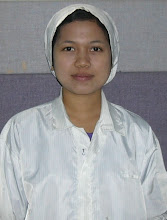Uterine fibroids exist in the bodies of countless women, and are typically not a reason for alarm. They can, however, be the cause of discomfort and pain in some cases, and at that point will require some immediate action. Being able to identify the signs and knowing what treatment options are available are both key factors if one wants to learn how to deal with a case of uterine fibroids.
An excellent place to begin is to understand what a uterine fibroid is. It is usually a non-cancerous growth that comes from the smooth muscle and connective tissue of the uterus. The term known as leiomyomatosis refers to a condition that occurs, when there are simply too many of the growths to keep track of. When the fibroids are cancerous, which does not happen often, they are called leiomyosarcoma.
It is essential to be able to recognize the symptoms of these growths, sometimes called fibromyomas. When there are problems related to them, they can be found in many forms, but usually, the myomas are asymptomatic. Common signs are painful, heavy periods, as well as backaches, and bloated abdomens. Frequent urges to urinate are another way to detect the condition.
Other more serious effects, such as infertility and hemorrhaging, should be addressed in a timely manner. While these occurrences are relatively rare, they should be taken seriously when they do happen, and handled by a qualified professional. Occasionally, the tumors are malignant, and then one must discuss treatment options, and make an educated decision. Whether the fibroids are benign or not, research suggests that there is not a link from their existence to other cancers.
Once a significant case of fibroids has been established, there are a variety of methods for dealing with them. While drastic measures such as hysterectomies have been traditionally taken, there are other avenues one can consider. Myomectomies, which are surgical operations to remove the growths, are becoming increasingly acknowledged as a viable choice for women. Such a surgery does not prevent the fibroids from returning, but it is far less severe than a hysterectomy.
Additional, less invasive operations are also an option, such as artery ligation, which is relatively modern. Others include embolization or ablation of the artery, and ablation using radio frequency. Every patient will vary in terms of what is appropriate, based on medical history and other factors. All of these should be sufficiently examined and considered, with the aid of an educated professional and trusted research resources.
Symptoms caused by the growths are frequently handled, using a more natural approach. Altering dietary habits is never a bad start, and can be as simple as reducing the intake of meats that contain hormones. Cutting back on over-processed foods, and limiting salt and sugar, are both ways to help with painful menstrual cycles, as well as bloating and discomfort in the abdomen. Medications can be taken, and there are herbal remedies for those who would prefer to take them.
However a woman chooses to confront the issue, when tackling a bothersome case of these tumors, it is sage to talk to a professional. Before committing to a decision, all the treatment options available should be considered. Each individual will find what works best, and can utilize a wealth of information. Finding out how to deal with a more serious case of uterine fibroids does not have to be an ordeal, and there are plenty of viable ways to conquer them.
Read more about fibroids treatment options by visiting at PCOSandFibroids.com. You will find information also about PCOS and ovarian cyst symptoms and treatments.


